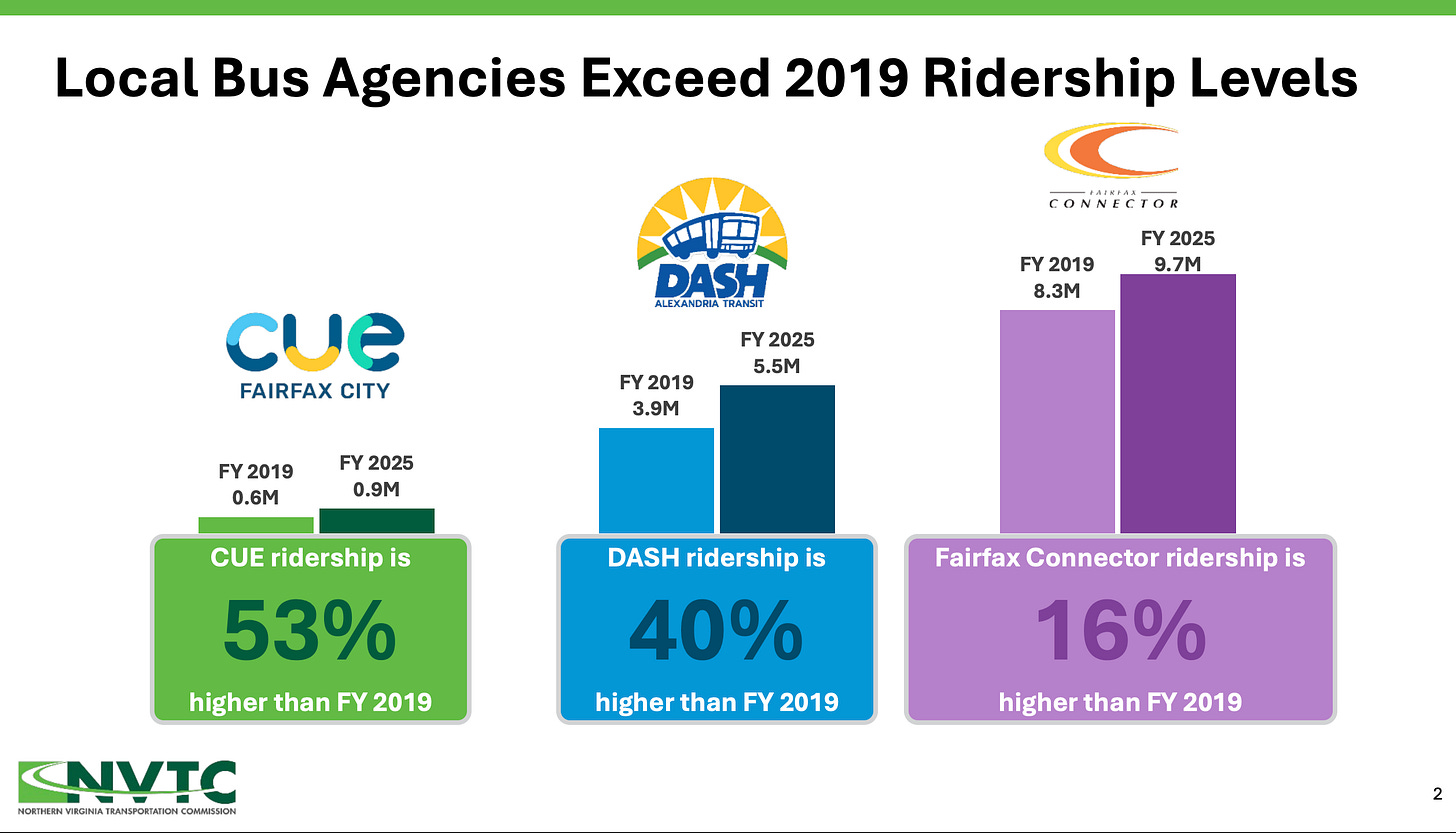DASH ridership soars 40% above pre-pandemic levels
Vice Mayor reports regional transit boom at City Council meeting, on same day that officials break ground on Union Station improvements
Alexandria’s DASH bus system is carrying 40% more passengers than in 2019, Vice Mayor Sarah Bagley reported Wednesday, part of a regional transit surge that has pushed ridership well beyond pre-pandemic levels.
Bagley, who serves as vice chair of the Northern Virginia Transportation Commission, delivered an oral report during City Council’s regular meeting emphasizing that the growth represents genuine expansion rather than pandemic recovery.
“This isn’t even about recovery anymore and Covid, this is 40% more ridership than 2019,” Bagley said.

The trend extends across Northern Virginia. Metro has sustained over 50 consecutive months of ridership growth, while bus services regionwide show similar increases.
Weekend ridership jumped over 30% compared to 2019 levels, indicating broader transit adoption beyond traditional commuter patterns.
“People are using more on weekends, generally well over 2019 levels,” Bagley said.
The tap-to-ride payment system has expanded from Metro stations to Metrobus, allowing passengers to use credit or debit cards instead of SmarTrip cards or apps.
“Parking lots are coming up next,” Bagley said.
Bagley also reported on Wednesday’s groundbreaking for four projects at Alexandria’s Amtrak Union Station. Mayor Alyia Gaskins, Councilman Canek Aguirre — who also serves on NVTC — and Bagley attended the ceremony.

The projects include removing an at-grade crossing, installing an elevator, and raising tracks to eliminate the need for stools when boarding VRE trains. Century-old bridges at King Street and Commonwealth Avenue will be replaced.
A fourth track will address the Northeast Corridor bottleneck through Washington and Northern Virginia.
“That is the game changer in terms of getting people up and down the Northeast Corridor without that choke point through D.C. and through Northern Virginia,” Bagley said.
Officials expect initial improvements within two years, with full completion in five years.
The commission also addressed regional transit funding through SJ28 and DMV Moves initiatives, which examine sustainable funding to maintain infrastructure and meet growing demand.
The commission adopted a resolution supporting additional revenue sources. Specific funding mechanisms remain under consideration by the General Assembly.
“We identified what the lanes are and now the question really will be on the General assembly to decide what are the revenue levers they are willing and able to pull to create more revenue to sustain transit not just Northern Virginia but throughout the Commonwealth,” Bagley said.
Detailed ridership statistics are available at novatransit.org. Council took no action on the oral report.


